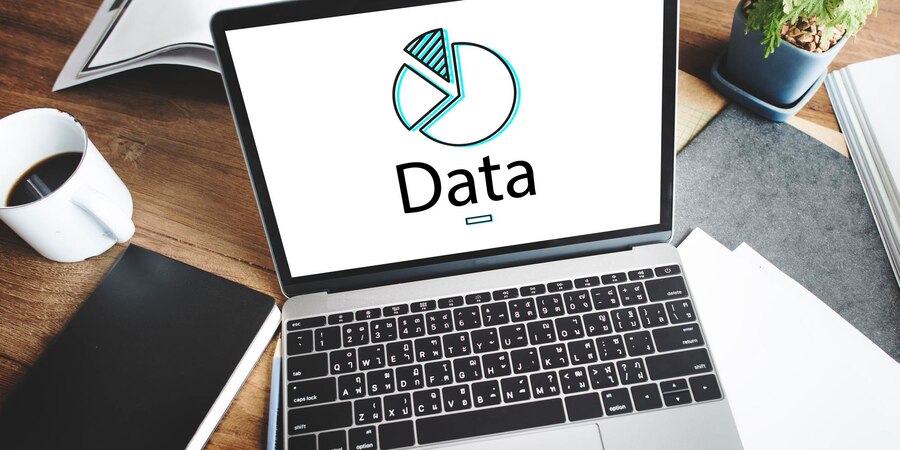Visibility Vs Observability: What Are The Differences And Why Are They Important For Data Quality?
The value of high-quality data cannot be overstated. Organizations rely on data to make informed decisions, drive business strategies, and gain a competitive edge. However, ensuring your data is of the highest quality is not simple. Data can be messy, inconsistent, and error-prone, leading to costly mistakes and missed opportunities. This is where Databand.ai comes into play, a data observability ally to help you demystify your data. Let’s explore why data visibility or observability should be your top priority for ensuring high-quality data.
Visibility Vs Observability: A General Overview
With the development of technology, IT infrastructures are getting more and more complex. Furthermore, distributions are adding more to this complexity. Hence, it is becoming really a struggle for cybersecurity administrations to protect data, users, applications, networks, and systems. In addition to that, with more and more layers of virtualization, fabric overlays, and complexity, it is becoming hard for security teams to view network systems properly.
According to TechTarget.com,
“Advanced security tools that incorporate AI and machine learning capabilities tout their ability to provide security clarity in first- and third-party infrastructures, as well as the various software-defined network layers. At the same time, confusion has mounted over the roles of security observability vs. visibility and monitoring.”
However, it is important to learn the differences between visibility and observability.
Visibility Vs Observability: Major Differences
The following are the major differences between visibility and observability:
Visibility
Visibility is the factor that provides you with information about what has already happened in your monitoring environments. Apart from that, it also allows you to get a better understanding of the state of the systems in a retrospective manner.
With the help of a monitoring tool, you will be able to watch, analyze, and present data. Basically, you can do so with a predefined set of metrics generated by the system. In typical cases, visibility deals with monitoring tools, services, devices, locations, and applications.
Observability
The observability factor offers you information about what is happening at a given moment. With observability, you will be able to bring usable intelligence together to bring out a good outcome that is not only continuous but functional as well. Here, you will have to use data in such a way so that you get a better understanding of the wider system.
Observability mainly works in higher levels like infrastructure, architectures, and applications. Basically, you will be dealing with such factors that are the constituent of a modern organization.
The major difference between visibility and observability is that you will have to deal with information that is already available to you. Here, you have to identify where there is something wrong. Also, you can understand why something is wrong in the first place.
On the other hand, with observability, you will have to actively troubleshoot the system. By doing so, you will explore properties and patterns that were undefined before. Generally, observability incorporates three things: context, validation, and remediation.
Understanding The Concept Of Observability

Observability of data, also known as data visibility, refers to monitoring, measuring, and ensuring the quality and reliability of your data throughout its lifecycle. It involves tracking data flow, identifying anomalies, and addressing issues in real-time. Consider it as tools and practices that help you maintain a clear and unobstructed view of your data. However, data observability goes beyond simple monitoring and involves proactive measures to prevent or mitigate issues before they impact business decisions.
The High Cost Of Poor Data Quality
Poor data quality can be a costly mistake for any organization. According to Gartner, the average financial cost of poor data quality to organizations is $15 million per year. This includes direct costs such as lost revenue increased operating expenses, and indirect costs like damaged reputation and customer churn. Poor data quality can also lead to incorrect business insights and decision-making, damaging the organization’s long-term growth.
Benefits Of Data Visibility

To ensure high-quality data, you must always have complete visibility into your data. Here are some benefits of data visibility that make it crucial for organizations:
- Quick Identification and Resolution of Data Issues: With data visibility, you can identify and resolve issues in real time before they escalate, minimizing the impact on business operations.
- Proactive Problem-Solving: Data visibility allows you to monitor trends and patterns in data quality, helping you identify potential issues before they occur. This proactive problem-solving approach can save time and resources in the long run.
- Improved Data Governance: With data visibility, organizations can ensure compliance with regulations such as GDPR and CCPA by maintaining accurate records of data usage, access, and management.
- Enhanced Data Collaboration: Data visibility encourages collaboration between different teams working with data, promoting knowledge sharing and improving overall data quality.
The Importance Of High-Quality Data
Because companies deal with massive amounts of data, having high-quality data is crucial for any organization:
- Informed Decision-Making: Quality data is the foundation for accurate and informed decisions. When your data is reliable, you can trust its insights, leading to better choices and outcomes.
- Operational Efficiency: High-quality data streamlines operations by reducing errors and inefficiencies. It helps automate processes, improve resource allocation, and minimize downtime.
- Customer Satisfaction: Data quality is directly linked to customer satisfaction. Accurate customer data ensures personalized experiences, which, in turn, enhance customer loyalty.
- Compliance and Risk Management: In many industries, compliance with data regulations is mandatory. High-quality data helps you adhere to these regulations and mitigate data breaches or non-compliance risks.
Observability Must Be A Top Priority
Now that we understand the significance of high-quality data let’s explore why data observability should be your top priority in achieving it.
Real-Time Detection Of Anomalies
Data is dynamic and can change rapidly. Anomalies can occur at any point in your data pipeline, from data ingestion to transformation and analysis. Observability tools provide real-time monitoring and anomaly detection, allowing you to identify issues as they happen. This proactive approach enables you to take immediate corrective actions, preventing bad data from propagating throughout your systems.
Improved Data Accuracy

Data accuracy is a cornerstone of data quality. Observability tools continuously validate and verify data, ensuring it aligns with predefined quality standards. When inaccuracies are detected, these tools can trigger alerts, enabling data engineers to rectify the issues promptly. By maintaining data accuracy, you can trust that the insights and decisions derived from your data are reliable.
End-To-End Visibility
Data flows through various organizational stages, from data sources to data lakes, warehouses, and analytical platforms. Observability tools and practices provide end-to-end visibility into this journey. It helps you track the lineage of your data, understand how it is transformed, and identify bottlenecks or performance issues. This holistic view allows you to optimize data processes for efficiency and reliability.
Data Quality Metrics
Measuring data quality is an integral part of data visibility or observability. These metrics provide quantifiable insights into the health of your data. Data quality metrics include accuracy, completeness, consistency, timeliness, and reliability. By regularly monitoring these metrics, you can establish benchmarks and set targets for data quality improvement.
Proactive Issue Resolution
Traditional data quality approaches often involve batch processing and manual checks, which can be time-consuming and reactive. Observability, on the other hand, is proactive. It enables you to identify and resolve data quality issues before they impact your business operations. This proactive stance minimizes the risk of errors and data-related incidents.
Cost Savings
Poor data quality can be costly. It can lead to erroneous business decisions, wasted resources, and reputational damage. Observability helps you save costs by preventing these negative outcomes. It reduces the need for manual data validation and correction, optimizes data storage, and maximizes the value of your data investments.
Enhanced Data Governance

Data governance is essential for maintaining data quality and compliance. Observability supports data governance efforts by providing a clear audit trail of data lineage, changes, and access. This transparency helps organizations enforce data policies, adhere to regulations, and demonstrate compliance to auditors and stakeholders.
Final Thoughts
In today’s data-driven landscape, data visibility or observability is not a luxury but a necessity. Ensuring high-quality data is fundamental for organizations striving to make data-driven decisions, enhance operational efficiency, and meet customer expectations. By prioritizing observability, you gain the tools and insights needed to monitor, measure, and maintain the quality of your data throughout its lifecycle.
This empowers organizations to unlock the true potential of their data, drive innovation, and stay competitive in a rapidly evolving business landscape. Therefore, if you haven’t already, it’s time to make data visibility or observability your top priority in ensuring high-quality data for your organization’s success.
Read Also:



